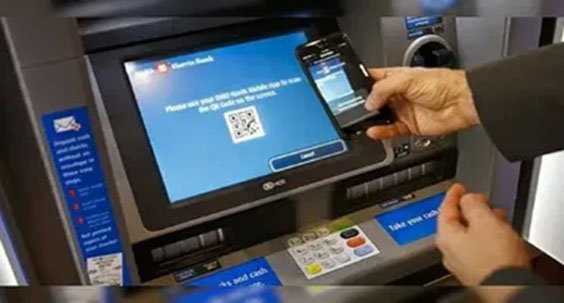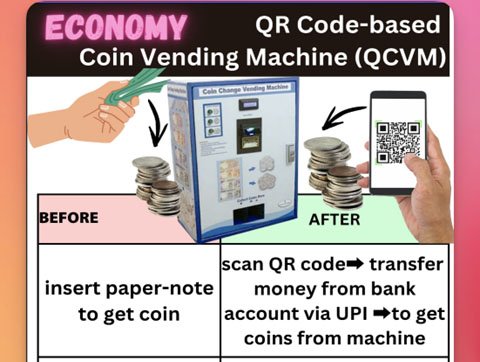QR CODE BASED COIN VENDING MACHINE

WHY IN NEWS?
- Recently, RBI in its monetary policy announced QR-code based coin vending machine.
WHAT ARE QR-CODE BASED COIN VENDING MACHINE?
- QR code-based coin vending machine or QCVM is intended to dispense coins similar to the manner in which currency notes can be withdrawn from ATMs.
- Coins can be withdrawn using the UPI QR code in designated vending machines.
- Customers will also have the option to withdraw coins in the required quantity and denominations in QCVMs.
WHAT DENOMINATIONS OF COINS ARE LIKELY TO BE DISTRIBUTED THROUGH THIS MODE?
- Coins of denomination of ₹1 – ₹20 are popularly in circulation now and these will be made available in QCVM.
- These vending machines are intended to be installed at public places such as railway stations, shopping malls, marketplaces to enhance ease and accessibility
HOW ARE COINS DISPENSED CURRENTLY?

- Presently, a person will have to approach his/her bank branch to withdraw coins.
- But if someone wants ₹5 coins for ₹3,000, (s)he will have to walk into her/his bank branch and tender the currency note in exchange of coins.
- They are also distributed at Reserve Bank of India’s regional offices.
DOES IT MAKE EASIER FOR USERS AND BANKS?
- As the interface here is UPI which is linked to the bank account of the person, the value of coins withdrawn is directly debited from the bank account.
- Thus it removes the requirement of tending notes in exchange of coins which saves time for the bank branches and the customer.
- Banks will have to keep replenishing these vending machines similar to the manner in which ATMs are stocked.
- This could imply additional costs for banks since this is done through third party agents.
WILL ALL BANKS PARTICIPATE IN THIS?
- RBI plans to launch the product in 19 locations across 12 cities.
- Since the implementation would begin through a pilot launch, only select banks may be involved in the initial stages.
- For now, the launch date or the bank selected for this process hasn’t been revealed and we’ll have to wait for a detailed circular regarding these aspects.
HOW QCVM WILL BE SUCCESSFUL?
- For people, coins find use in public transport including autorickshaws, especially if you are a resident of Mumbai for instance.
- With cash sales still being an important component at petty shops and kirana stores, where coins tend to be in short supply, such vendors could also benefit from QCVM.
- QCVM can also prove successful in case of dealing with street vendors.
ISN’T IT CONTRADICTORY TO GOVERNMENT’S CASHLESS VISION?
- The intention seems to be to enhance the last mile availability of cash across segments including the mass market.
- However, with UPI available on feature phones and the intent of the government remaining steady on increasing the popularity and reach of digital payments, QCVM could be counterproductive.
- The average cost of minting a coin is ₹1.11. If we add another layer for setting up and distributing coins through vending machines, the proposition appears unattractive from a cost perspective.
- Also, e-Rupee’s retail launched in December 2022 is intended to reduce the minting/printing cost of currency and gradually replace physical currencies with digital currencies, QCVM seems to be defying that purpose as well.
SOURCE : LIVEMINT
SYLLABUS : MAINS, GS 3 INDIAN ECONOMY

